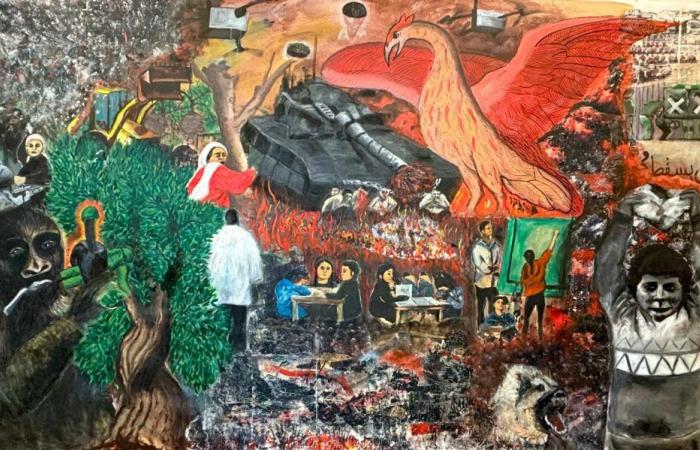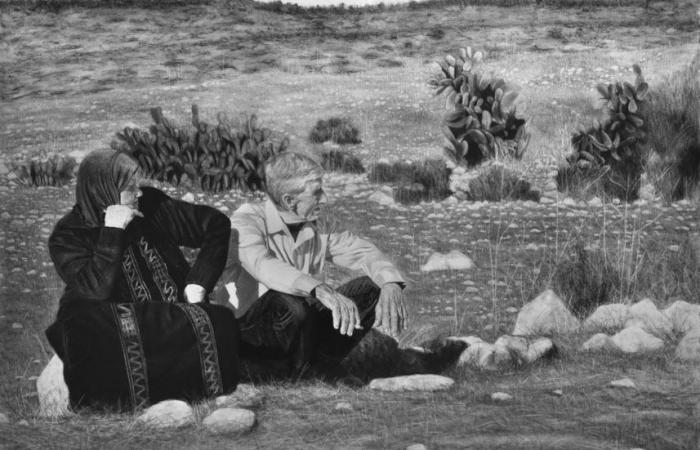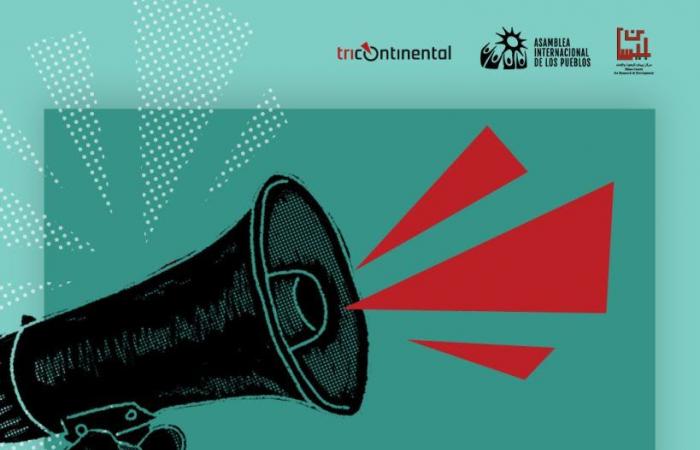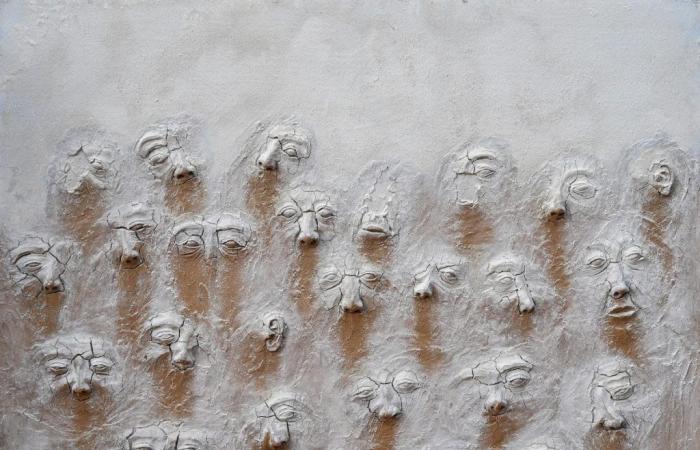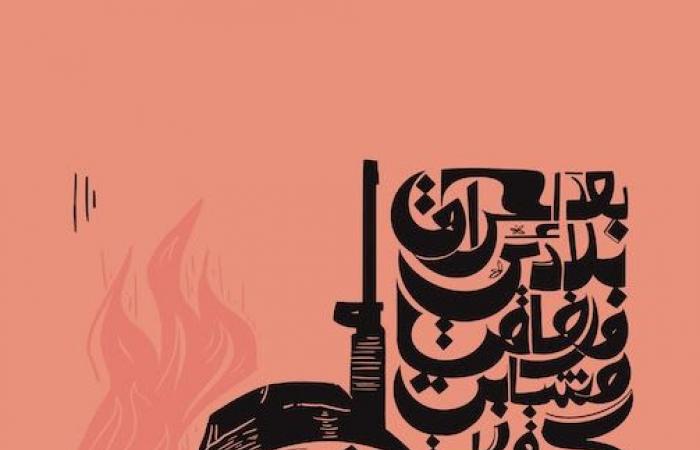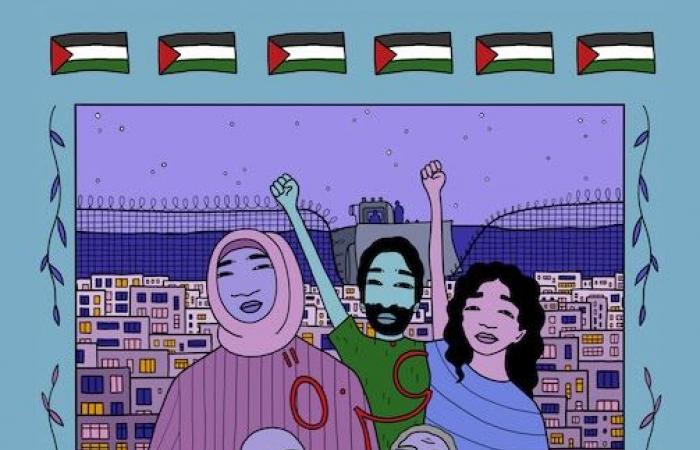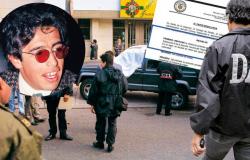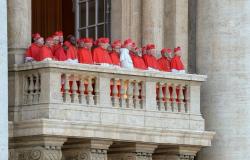Image: Malak Mattar (Palestina), If the Olive Tree Knew [Si el olivo supiera]2025.
Greetings from the offices of the Tricontinental Social Research Institute.
In 1948, the newly proclaimed Israeli government seized 78% of the Palestinian territory and expelled more than half of its population (750,000 people) of its villages and cities. This act ignored Resolution 181 (1947) of the United Nations General Assembly, which demanded the end of the British colonial mandate and the Palestine partition in a Palestinian state and another Jew. This process was known as the Nakba (Catastrophe). The Palestinian population took refuge in Gaza, the West Bank, East Jerusalem and the neighboring Arab states, hoping to return to their homes soon. In fact, Resolution 194 (1948) of the UN General Assembly established that “refugees who wish to return to their homes and live in peace with their neighbors, who do so as soon as possible, and that compensation must be paid …”. None of this happened: the Palestinian people are still waiting “as soon as possible.” In September 1948, the Palestinians hurriedly organized the government of all Palestine in Gaza, in a symbolic attempt to exercise sovereignty over their stolen lands. Many of its officials, such as Prime Minister Ahmed Hilmi Pasha Abd al-Baqi (1882–1963) and Foreign Minister Jamal Al-Husseini (1894–1982), came from Palestinian elite families, whose political vision was marked by the devastation of his great loss. After the Armisticio agreements of 1949, signed between Israel and neighboring states (Egypt, Lebanon, Jordan and Syria) after the 1948 war, most of the territory not occupied by Israel was under the control of Jordan and Egypt: Jordan administered what is now the West Bank and East Jerusalem Egyptian.
Samah Shihadi (Palestine), Harvest Break no. 1 [Pausa en la cosecha n°1]2017.
In 1967, Israel occupied the West Bank, Eastern Jerusalem and Gaza. The UN Peace Forces withdrew from the region. At least 750,000 Palestinas and Palestinians fled from their lands in this second exodus, which would later be known as the Naksa (Recoil). That same year, the UN Security Council approved Resolution 242, which urged Israel to end the occupation of these three regions.
Since then, the UN began to formally refer to these territories as “territories occupied by Israel since 1967”. In October 1999, after the creation of the UN Humanitarian Affairs Coordination Office the previous year, the organization adopted the term occupied Palestinian territory (TPO) as an official designation to refer to Gaza and the West Bank, including East Jerusalem, expressly retaking the language on “occupied territories” used in the fourth convention of Geneva of 1949 On the part of Israel is illegal according to International law, including its settlements in the West Bank, the wall built around that territory, the annexation of East Jerusalem and the blockade of Gaza.
Since October 2023, Israel has intensified its genocide against the Palestinian people in Gaza. He has also intensified his actions in other parts of the TPO, Bank and East Jerusalem, although they have not received the attention they deserve due to atrocious violence in Gaza. The Tricontinental Social Research Institute was associated with the Bisan Center for Research and Development (Ramala, Palestine) to produce the red alert No. 19, “Israel’s crimes in the West Bank”, on the situation in the West Bank and East Jerusalem. Since its foundation in 1989, the Bisan Center – which focuses especially on women’s rights – has been one of the main social research institutes in Palestine (its 2011 report, for example, is a pioneering text on gender violence in the TPO). In this red alert, we will present the facts, documented by the United Nations about the attack on the Palestinian society in these areas of the TPO. Oslo II and the occupied Palestinian territory
Oslo II and the occupied Palestinian territory
In September 1995, the Palestine Liberation Organization (OLP) and the Israeli government signed the Palestinian-Israeli provisional agreement on the West Bank and the Gaza Strip (Oslo II), which initiated a process oriented to the eventual creation of a Palestinian State in parts of the occupied Palestinian territory, adjacent to Israel.
The TPO represents only 22% of the historical Palestine (defined as the territory under the British mandate). That is, the Palestinian people had less than a quarter of their ancestral land, and not even on that portion exercises true authority. After the signing of the provisional agreement, the West Bank was divided into three zones: Zone A, technically under civil and Palestinian security through the Palestin 4.62% of the historical Palestine. Zona C, fully controlled by Israel, comprises more than 60% of the West Bank or 13.42% of the historical Palestine.
In practice, according to the logic of Oslo II and after the annexation of East Jerusalem and the occupation of Gaza, Israel controls 97% of the historical Palestine.
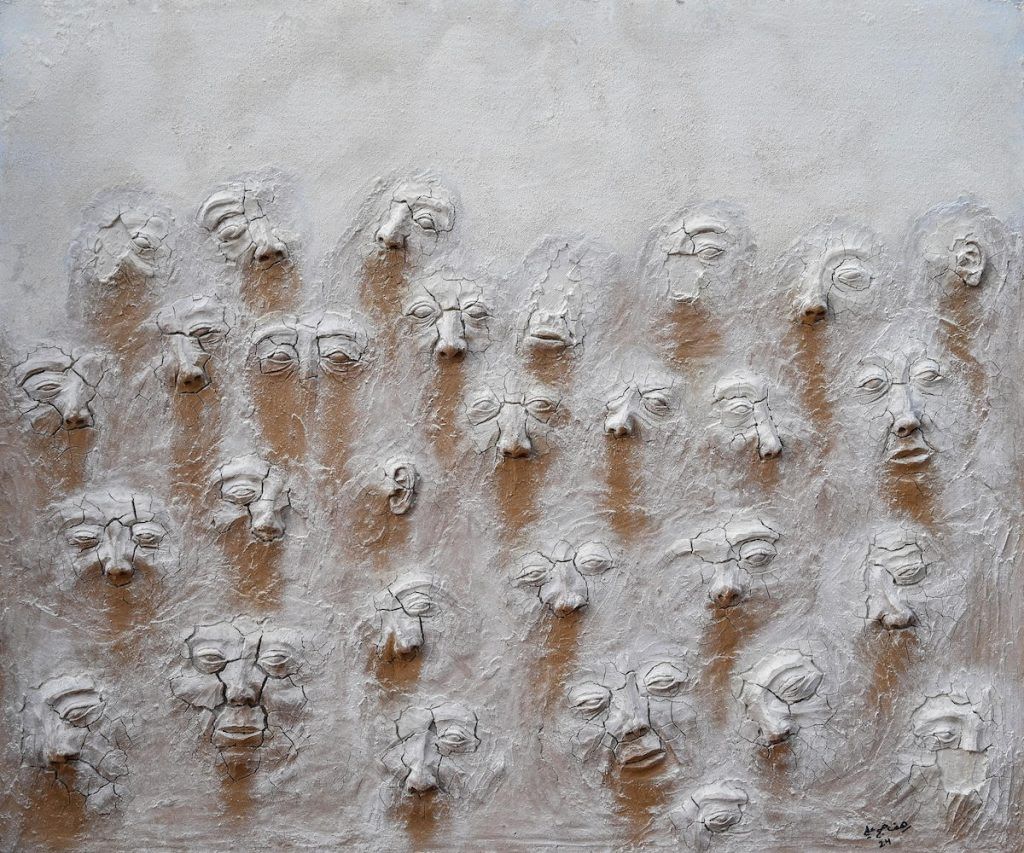 Rahaf Haj (Palestina), Ali Choking no. 2 [Alí se ahoga n°2]2024.
Rahaf Haj (Palestina), Ali Choking no. 2 [Alí se ahoga n°2]2024.
The suffocating oppression of the Palestinian people in the West Banking Israeli operations in the West Bank are designed to make the life unbearable for the Palestinian population. The controls and restrictions on mobility have made it practically impossible to educate youth and give employment to adults.
Before October 2023, Israel operated 590 control stalls and road blockages in the West Bank. Since then, this figure has increased to almost 900, which has caused an almost total paralysis of the most basic human activities. For the Palestinians it has become impossible to access the water and the land for agricultural production, as well as the drinking water necessary to lead a dignified life.
-The criminalization of the United Nations Agency for Refugees in Palestine (UNRWA for its acronym) has seriously interrupted its operation, preventing the Palestinian refugee population (which represents approximately a quarter of those who live in the West Bank) access basic education, health and employment services. Tactics such as shots, pogroms, sexual violence and the destruction of households and agricultural land, thus accelerating forced displacement. Since the beginning of Operation Wall of Iron in January 2025, the Israeli army has forced 8,255 Palestinian families of the Jenin refugee fields (3,840 displaced families), Nur Shams (1,910 displaced families) and Tulkarem (2,505 displaced families). These families are direct descendants of the Palestinxs expelled refugees from their homes during the Nakba of 1948 and who have been denied the right to return since then.
In addition to these refugee fields, the Israeli occupation forces – which include both the formal army and armed settlers – have expelled 28 Palestinian communities from their lands, between January 2022 and September 2023. Between October 2023 and April 2025, they have destroyed more than 3,500 structures, including homes, corrals for livestock and water tanks in the water tank in the cisjordan.
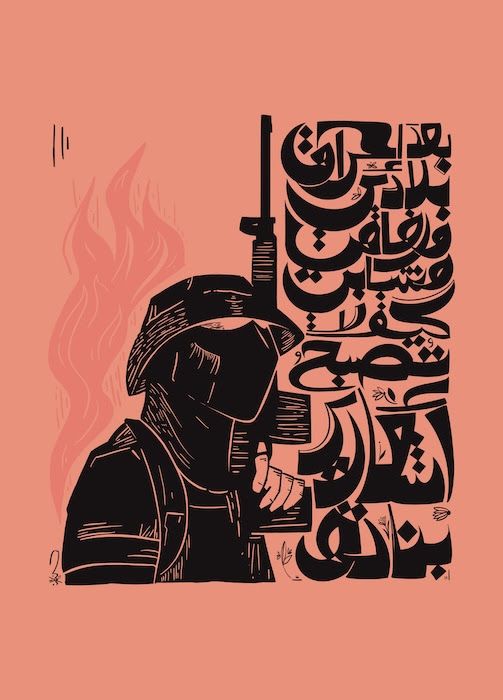
Haneen Nazzal (Palestina), Against [Contra]2022.
death, arrest and torture
Since October 2023, the Israeli occupation forces have killed approximately 900 Palestinxs in the West Bank, including at least 190 girls and boys, and have injured 8,400 more. These figures could be much higher, given the lack of humanitarian organizations that are properly documented Israeli violence in a territory whose institutions have been devastated by genocide and occupation. At the end of 2023, the Israeli occupation forces have arrested 15,000 Palestinxs, many under the figure of “administrative detention”, which does not require formal charges (these figures could also be subject to the serious restrictions on the right to defense).
Since October 7, 2023, more than 65 cases of Palestinian people killed in prisons, detention centers and Israeli concentration camps have been documented. Sexual violence is a systematic practice in these centers.
The Bisan Center for Research and Development, the International Assembly of the Peoples and the Tricontinental Social Research Institute call to intellectuals, civil society organizations and political and social movements to focus their attention not only in Gaza, but also in the rest of the occupied Palestinian territory. Genocide in progress and crimes against humanity cannot be ignored or continue unpunished.
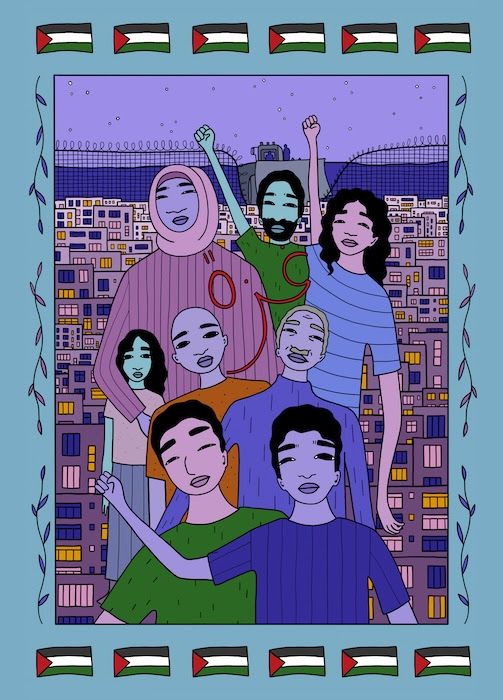
Aude Abou Nasr (Lebanon), Gaza2023.
Fadwa Hafez Tuqan was born in Nablus, Palestine, in 1917. For when he died in 2003, his city was already under Israeli military dominance as part of occupied Bank. The poet Mahmoud Darwish wrote his elegy, reflecting on how she, like others, had to write poetry in the face of the devastating events of 1948 and 1967: “What does a poet do in catastrophe times?” Darwish wondered. “Suddenly, the poet must leave himself outward, and poetry becomes a witness.”
One of his most famous poems, The Seagull and the Negation of the Negation [La gaviota y la negación de la negación]published on November 15, 1979 in Attes’ah, A weekly Jerusalem that circulated between 1977 and 1995 and amplifies the voices of the Palestine left.
Crossed the horizon and torn the darkness,
tasting the blue, furrowing wings of light –
Touring, returning and turning again.
He called my bleak window and the panting silence trembled:
Bird, do you bring good news?
He told me his secret, without saying a word.
Then, the seagull vanished.
that in hard times, standing in the tunnel of silence,
Everything changes.
Even in the hearts of the dead, seeds germinate,
Dawn breaks into darkness.
Now I know,
Upon hearing the gallop of horses, the call of death along the coast:
that when the flood arrives,
The world will be cleaned from its pain.
May God bless you for the good news you bring.
Because now I know
That something happened … the horizon opened, and the house received the light of day.

